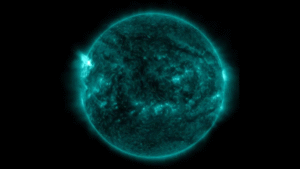A recent comprehensive study has unveiled a startling trend: Shocking New Study: North American Bird Populations Are Declining Rapidly. According to the 2025 U.S. State of the Birds report, over one-third of American bird species are now classified as being of high or moderate conservation concern. The most affected groups include grassland and arid-land birds, which are experiencing a steep and continuous decline.
Table of Contents
The Current State of Bird Populations in North America
The latest research on bird populations across North America has revealed a troubling reality:
| Bird Type | Population Decline Since 1970 |
|---|---|
| Grassland Birds | 43% |
| Arid-land Birds | 41% |
| Waterfowl | 20% (since 2014) |
These figures indicate an alarming trend, with habitats being destroyed at an unprecedented rate due to urbanization, deforestation, and climate change. The destruction of wetlands, forests, and prairies has left many bird species struggling for survival.
What’s Causing the Decline in Bird Populations?
Several factors contribute to this drastic reduction in North American bird populations:
- Habitat Loss – Expanding agricultural land, urban sprawl, and deforestation have left birds with fewer places to nest and find food.
- Climate Change – Rising temperatures, altered migration patterns, and extreme weather events make survival increasingly difficult.
- Pollution and Pesticides – Chemical contaminants reduce insect populations, affecting the food chain and directly poisoning birds.
- Collisions with Buildings & Vehicles – Millions of birds die each year due to window strikes and road accidents.
Causes of Bird Population Decline
Habitat Loss → Urban Expansion
↘ ↗
Climate Change → Extreme Weather
↘ ↗
Pollution → Pesticides
↘ ↗
Collisions → Window StrikesThe Economic and Ecological Impact of Bird Loss
Birds play a crucial role in maintaining the ecosystem, contributing to pest control, seed dispersion, and pollination. Their loss can have widespread consequences, affecting agriculture and natural food chains. Additionally, bird-watching and related outdoor activities contribute approximately $280 billion annually to the U.S. economy, supporting thousands of jobs in the tourism and conservation sectors.
Conservation Efforts & Hope for the Future
Despite these alarming declines, targeted conservation efforts have proven effective in reversing some losses. Wetland protections have led to a 24% increase in dabbling and diving duck populations since 1970, demonstrating that proactive conservation efforts can make a difference.
One significant initiative is the Migratory Bird Treaty Act, which has protected countless species by regulating hunting and habitat destruction. Additionally, organizations like the Audubon Society and government-backed programs are working on large-scale habitat restoration projects.
How Can Individuals Help?
Everyone can play a role in reversing bird population declines. Here are some impactful ways to contribute:
- Create Bird-Friendly Habitats – Plant native trees and avoid pesticides.
- Reduce Window Collisions – Install bird-safe glass or external screens to minimize strikes.
- Support Conservation Policies – Advocate for stronger environmental protections and bird-friendly legislation.
- Participate in Citizen Science – Join programs like the Great Backyard Bird Count to help scientists track bird population trends.
Conclusion: An Urgent Call for Action
The rapid decline of bird populations in North America is a pressing environmental issue that requires immediate action. With a combination of conservation efforts, policy changes, and individual involvement, it is still possible to protect and restore these vital species. Birds are not just an essential part of the ecosystem; they are also deeply connected to American culture and economy. By acting now, we can help secure a thriving future for them—and for ourselves.
Read the full U.S. State of the Birds report here for in-depth research and data.





